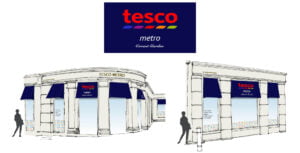The Concept of Branding
A brand strategy involves creating a distinct name, symbol, or design that makes a product easily identifiable. It is a process of creating a unique individuality that sets your business or product apart from others. This method’s purpose is to help consumers distinguish your product from others. It helps establish a loyal customer base by creating a lasting impression on their minds.
The concept of branding goes beyond an attractive logo or a catchy tagline. It extends to every aspect of a consumer’s experience. From your website, your social media experiences, customer service, and even the way you package your products. The fundamental idea is to know your brand’s core value.
What do you stand for?
Convey these in the best possible way to your target audience.
• Branding helps in building a unique identity: The main purpose of branding is to create a distinct and identifiable presence for your business or product. Use specific colours, fonts, logos, taglines and other elements that resonate with your brand’s personality.
• It aids in distinguishing from competitors: With countless businesses offering similar products or services, it becomes crucial to stand out. Branding allows you to differentiate yourself from others in the market. It highlights your unique offerings.
• Establishes customer loyalty: A well-established brand creates a lasting impression on customers. Leading them to become loyal patrons. Consistency in branding plays an important role, it enhances recognition and fosters trust.
• Enhances consumer experience: Branding isn’t limited to visual aspects. It extends across all consumer touchpoints. From website interface, social media interactions, customer service quality or packaging. Each of these facets must reflect the essence of your brand. Ensuring a cohesive user experience.
• Communicates core values effectively: Understanding and communicating your brand’s core values forms the crux of successful branding. These values align with those of your target audience resulting in increased affinity towards your brand. In conclusion, effective branding requires thorough understanding of one’s business ethos. Paired with meticulous planning and execution across various platforms. It sets you apart from the competition while building long-term relationships with consumers. Both these are essential for sustained growth.
Defining Your Brand’s Identity

A brand’s identity refers to the visible elements that distinguish a brand from others. Often in the form of colour, design, and logo. It’s crucial to note that brand identity is more than great graphic design. It is the embodiment of your company’s values, personality, and promise to customers.
You can define what your brand stands for. Next, project these characteristics across all touch points. Your brand identity helps people form perceptions about your company. It’s crucial to make smart, strategic decisions. This involves having a consistent tone and messaging that reflects your brand’s ethos across all platforms. It necessitates a deep understanding of your target market. As well as your company’s mission, vision, and values. How you position your brand to consumers is fundamental. It determines how they perceive your brand and how they interact with it.
The Significance of
Market Research in Branding
In the realm of branding, market research acts as a compass. Directing brands towards their target demographic. It embarks on the journey of deciphering consumer needs, wants, preferences, and habits. It allows companies to carve a path that resonates with their potential customer base.
Market Research provides relevant data to aid marketers in understanding the market. This includes knowing who their competitors are and the trends in the market. Market Research in Branding equates to informed decision-making. It sets the stage for a brand’s identity and narrative. Understanding the market demographics and psychographics through research aids brands craft relatable, appealing, and effective brand messages. Every branding decision or strategy aligns itself with the target audience’s aspirations and lifestyles. Forge a deep connection and build loyalty. Market Research is integral to branding. It forms the backbone of a robust, standout branding strategy.
Creating a Unique Brand
Voice and Message
Establishing a brand voice and message is a crucial undertaking that demands diligence and creativity. This ensures proper communication from your brand to the consumers. Your brand voice outlines your consistent personality. It should echo the values and beliefs that your core audience shares. This distinctive voice sets your brand apart and becomes synonymous with your identity.
The process of creating this unique voice and message starts with identifying your target customer base and understanding their nuances. The brand message needs to be resonant, compelling, and memorable. The choice of words, tone, style, and even humor becomes a reflex of your brand’s personality. It helps forge meaningful connections with your consumers. Indeed, a distinct brand voice establishes industry authority and consumer trust.
Utilizing Social Media in Your
Brand Strategy
In the digital age, platforms such as Facebook, Instagram, Twitter, and LinkedIn serve as powerful venues for brand promotion. These platforms function as mediums of communication. A gateway to vast, diversified audiences. Strategic use of these platforms enhances brand visibility, attracts potential customers, and cultivates a relationship with existing clients.
Strategies include regular posting of engaging, valuable, and brand-related content. Social media also offers advanced tools to analyze consumer behaviour. This helps better target promotional campaigns. Additionally, features such as comments, likes, and shares can foster community and generate feedback. Further tailoring your brand offerings to customers’ needs and preferences.
Incorporating Storytelling in
Your Brand Strategy
Storytelling has evolved into a powerful marketing tool backed by strategy. It’s a compelling approach wherein businesses craft their brand narratives. They reflect the brand’s essence and resonate with their target audience on a deeper level. Brands use storytelling to share their journey, values, and objectives. Thereby fostering an emotional connection with their audience. It is not about selling a product or service, but about selling a vision, an emotion, or an experience. All engulfed in a captivating story that leaves an indelible mark on the audience’s mind.
The potency of storytelling is its ability to narrate a brand’s uniqueness in a compelling, relatable manner. By integrating stories into their strategies, brands separate themselves from the market. This reinforces the brand’s persona and engages customers closer to the desired brand image. Successful storytelling requires authenticity, creativity, and relevance. Each story serves a purpose and aligns with the overall brand strategy. It transforms mundane brand information into dynamic narratives that amuse, engage, and educate. Building deeper brand-customer relationships.
What exactly is branding?
Branding is the process of creating a unique name, message and image in a consumer’s mind. It helps companies distinguish itself from the competition.
How can I define my brand’s identity?
Your brand’s identity is a combination of various elements like logos, taglines, voice, and colour palettes. And even the type of language you use in your communications.
Why is market research important in branding?
Market research is crucial in branding as it helps you understand your target audience, their preferences, and their needs. This information is vital in creating a brand that resonates with them and stands out in the market.
How can I create a unique brand voice and message?
Creating a unique brand voice and message starts with understanding your company’s mission, values, and personality. Create a consistent voice and message that aligns and differentiates your brand from competitors.
How can I use social media in my brand strategy?
Social media for brand promotion includes creating engaging content. Brands can interact with customers, share updates about their products or services, and promotional campaigns.
Can you explain how storytelling can be incorporated into my brand strategy?
Storytelling in your brand strategy involves telling your company’s story or the stories of your products. Tell it in a way that engages and resonates with your target audience. This could be through videos, social media posts, blogs, or any other form of content that allows you to share your brand’s journey and values.
Why is storytelling beneficial in a brand strategy?
Storytelling is beneficial in a brand strategy because it connects with your audience on a deeper level. It humanizes your brand and makes it more relatable. This emotional connection can lead to increased brand loyalty and higher customer retention.
Words can change the world. At Paperballad & Co., we wield the mighty pen to help you achieve product-market fit through science-driven content. Schedule a consultation with us here and change the world with our words.















